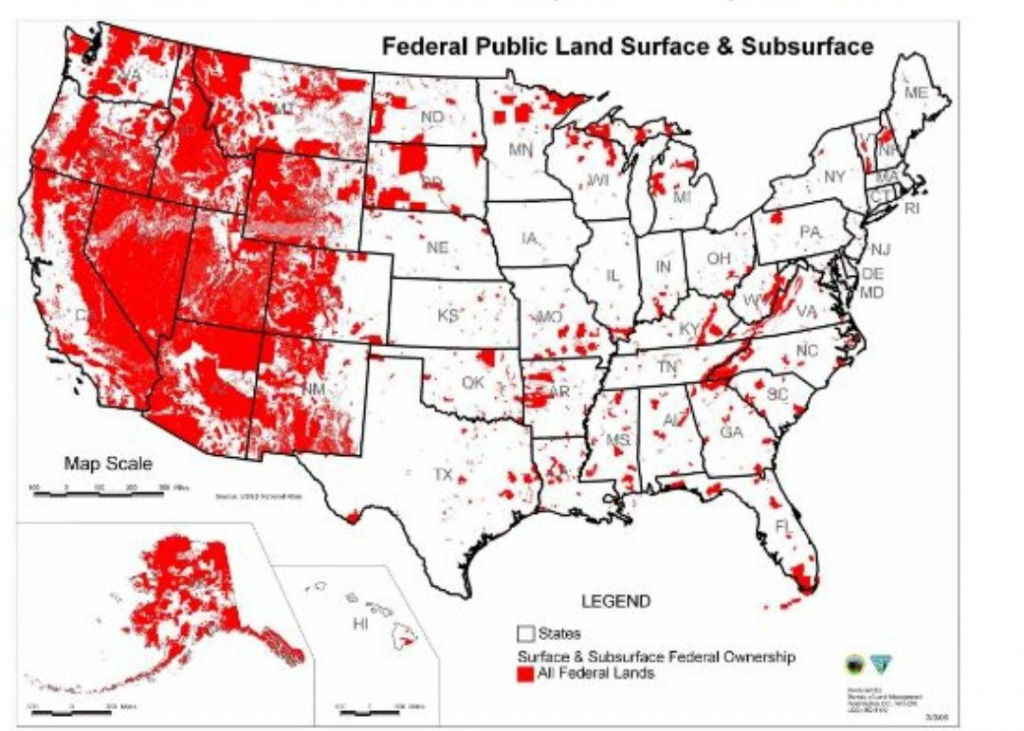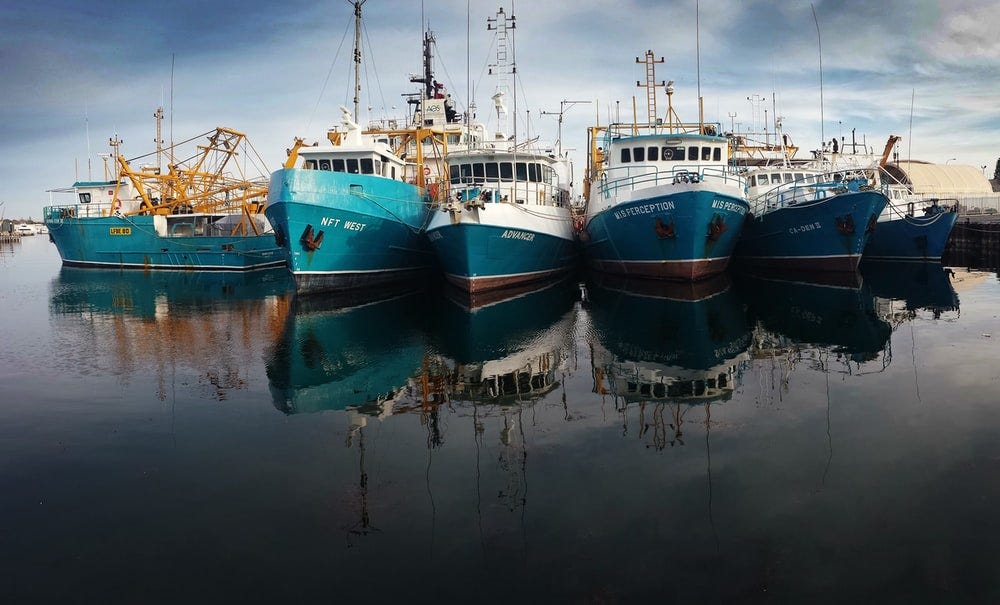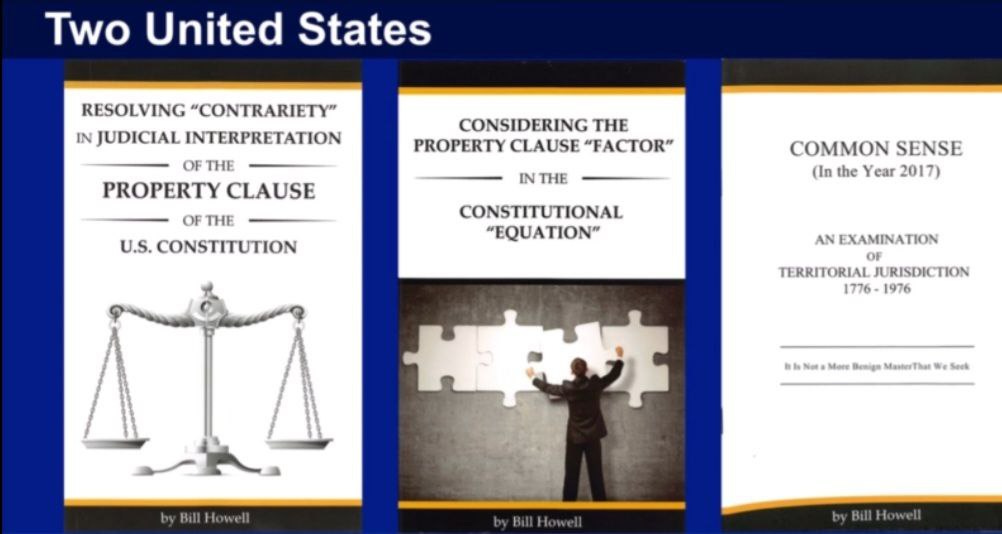The Great Western (and beyond) Land Grab-Who Really Owns it and Why?
“The Constitutional County” (TM) Blueprint No. 10 (part 2 of 4)
“The Constitutional County” (TM) Blueprint No. 10 (part 2 of 4)
Recently we presented an overview of “The Constitutional County’s” Blueprint number 10 entitled, ‘Jurisdiction.’ Because ‘Jurisdiction’ is the most complex and detailed of all the Blueprints, it is best to break it down into pieces. Click here to read the Jurisdiction overview.
Jurisdiction consists of 3 main elements. In this article, we are going to cover the subject above, known as LAND.
• Place (land)
• Person
• Subject matter
The map illustrates why this matters. A lot! The Red area is under federal control (unconstitutionally), and the White area belongs to the States. The dramatic impact of federal overreach is apparent, especially in the Western States. In terms described by Bill Howell, what we view as whole states are, according to the latest federal interpretation, mere islands of state authority floating in a sea of federally controlled lands.
Founding Principles
So many people in the United States have never heard of these concepts, much less understood them. I am going to break this down as simply as possible.
Let’s go back to where this all started. Historically, kings owned all lands and favored their supporters with the benefits of managing portions of them. Everyone else was a serf, denied land ownership from generation to generation.
The Founding Fathers understood you “either own property or are property.” If you don’t own land, you are working for and controlled by someone else. To achieve freedom and equality, the People must own their own land. That was the Founding Fathers’ plan. At the time the Constitution was ratified, there were large territories not yet made states. There Founders gave the federal government interim management of these lands until they were “disposed” of. It was generally accepted this occurred when the states were formed. Portions of public lands were perpetually granted and turned into private property with “land patents.” These were perpetual land grants. Our Founding Fathers wanted citizens to live on the land and make it productive for two years, which is the principle of good stewardship.
Communism
Karl Marx also understood land ownership is essential to freedom and equality, but he sought the opposite outcome, the opposite vision of biblical principles–the return of feudalism. Despite appearances of being a populist movement, Marx summed up Communism by stating its goal was the abolition or elimination of private property.
The Constitution
Article I Section 8 of the Constitution allows federal land ownership but is limited to 10 square miles and other lands required for forts, arsenals, dockyards, and other needful buildings that the states had to consent to. This was consistent with their objective to never allow the “king” to claim all the lands, only those required for the common defense.
Article IV dealt with the disposition of the territories. It assigned the federal government as the trustee of these lands, with the duty to dispose of them. They were not to remain in federal control. For decades, it was generally considered statehood transferred legislative authority from the federal to the state governments. Who controls the policies? Who has the legislative authority? Within the “Enabling Acts,” there is a hands-off of legislative authority within their boundaries.
The Eisenhower Report
During the Eisenhower administration, a report was issued that stated:
“With respect to the large bulk of federally owned or operated real property in the several States and outside of the District of Columbia it is desirable that the Federal Government not receive, or retain, any measure whatever of legislative jurisdiction, but that it holds the installations and areas in a proprietorial interest status only, with legislative jurisdiction remaining in the several States.”
The report defines four levels of federal control, from (1) exclusive control to (4) exclusive state control, with (2) being mostly but not exclusively federal, and (3) being mostly but not exclusively state. To understand federal terminology, it is necessary to understand its point of view as the federal government. Therefore, exclusive means total federal control. Proprietary means the federal government is a mere landowner, subject to the exclusive legislative authority of the states.
JURISDICTIONAL STATUS OF FEDERAL LANDS IN THE UNITED STATES (in other words, who owns what)
EXCLUSIVE MEANS FEDERAL
CONCURRENT MEANS FEDERAL MAKES THE FINAL DECISION
PARTIAL IS A MIXTURE OF THE TWO ABOVE EXCEPT THE STATES HAVE THE FINAL DETERMINATION
PROPRIETARY MEANS IT’S ALL-STATE JURISDICTION BECAUSE THE FEDS ARE PROPRIETARY’S
According to the Eisenhower Report, the vast majority of the public lands is under the partial or complete control of the states, NOT the federal government.
Almost 6 million acres are EXCLUSIVE (meaning owned by the feds).
Almost 25 million acres are CONCURRENT(meaning the federal government makes the final decision on land ownership).
Almost 12 million acres are a PARTIAL mixture of the two above (except states have the final say).
Almost 728 million acres are where the FEDS ARE PROPRIETARY’S (meaning the federal government has ultimate ownership).Federal Greed
Over time, the municipal powers got greedy and wanted even more lands as their value became more and more apparent.
Under the Kleppe Supreme Court decision, the Federal Government completely reversed the federal position. It asserted the federal government, not the states, has jurisdictional authority over the public lands, there is no duty to further dispose of them, and the Constitution and Bill of Rights do not apply. Indeed, the federal government now asserts they are governed by Maritimes laws! In effect, the federal government asserts the public lands are foreign country, where we have no rights.
The Federal Government is trying to divide us- “the feds want it all.”
The proof is in the pudding. Here’s a lesson. Let’s learn these terms.
What is Maritime Law? Why is it unconstitutional? How is it that the sea crept up onto the land?
How did the “sea happen to overtake the land”? What does this even mean? Overrule? Perhaps a better question is how is it that the land which should have been under Constitutional Rule now is under International Law outside of the US Constitution? The answer is it took place slowly and over time.
“Maritime Law” seeped inward toward the land and, consequently, onto the land as vessels from the ocean moved toward the shore. Ships navigated up the rivers, then to the streams, then to the creek, then up onto the land. The result? “Maritime Law” took over certain land areas.
Originally maritime law applied to international waters outside the jurisdiction of any one nation. They needed to resolve their disputes quickly. No time for due process. First, it was just at sea. Then it was extended to the shoreline. Then it was extended into the harbors and onto the harbor lands. Then it was extended up the rivers, the “navigable waters,” which meant as far as a barge could go upstream. Finally, it extended on the public lands, putting them under International laws that are outside our Constitution.
In summary, there is a huge battle over who controls the public lands, especially in the West. The Federal Government has increasingly been adversarial to the concepts of statehood and private land ownership, crept in to take control over lands that belong to ‘We The People.’
Want to learn more? Join “The Constitutional County” today by clicking here. It’s completely free, and you will not regret it.
For those who want to study this topic in-depth, you may purchase these books. Each will give a detailed and intricate study on this topic.
Three excellent books by Bill Howell-
A CALL TO ACTION:
Bringing you conservative news and commentary means it is tough out there on social media. We’re constantly getting kneecapped and constrained by tech companies who find the truth intolerable, resulting in our reach being severely throttled.
For this reason, please consider supporting us directly. If you like what you are reading and desire to to see more, please support our work here.








